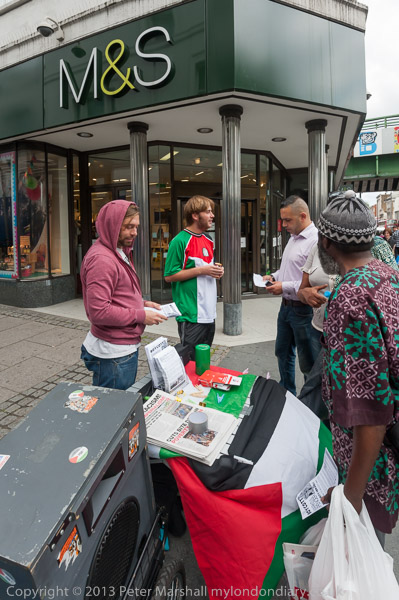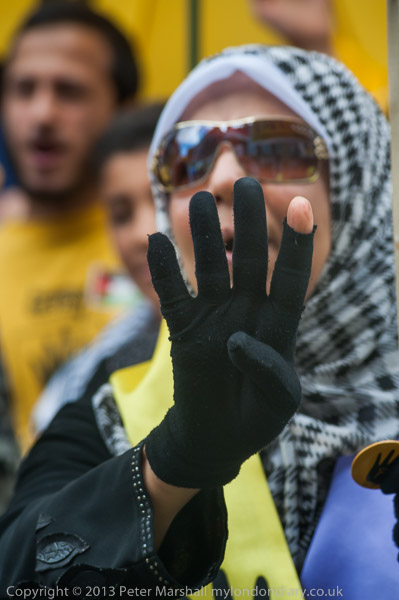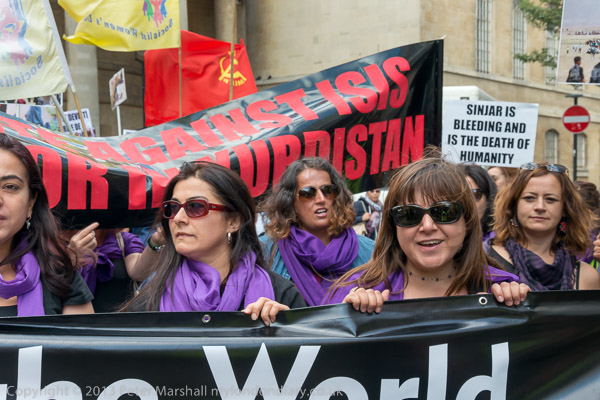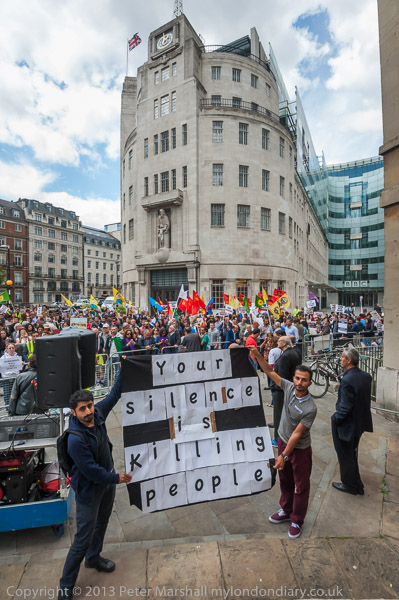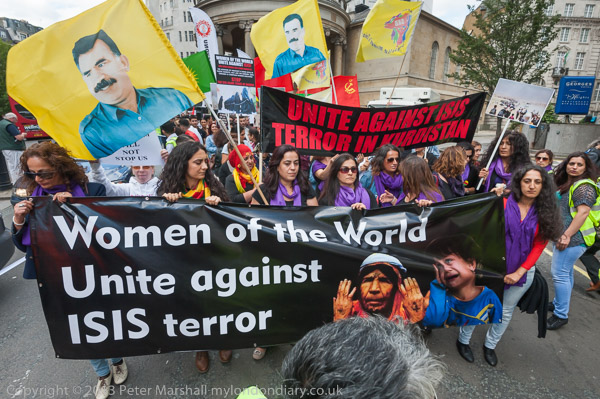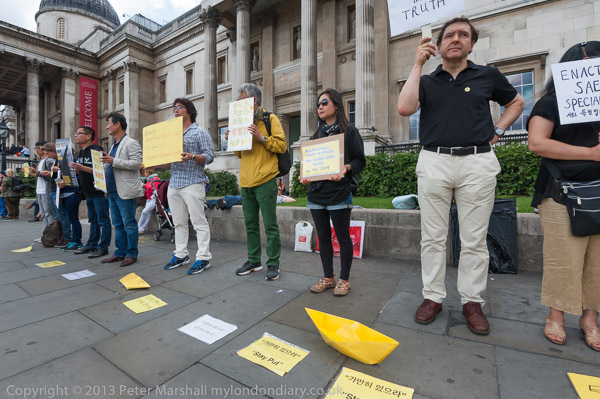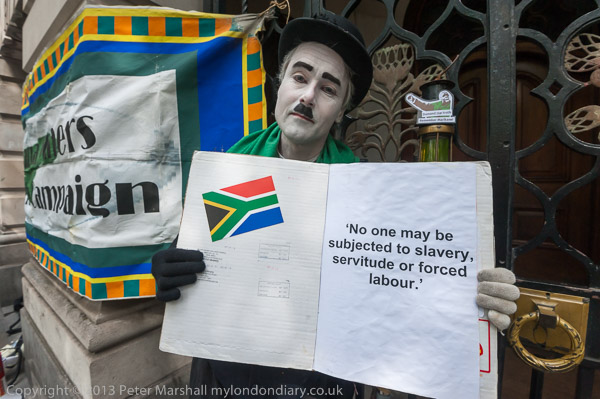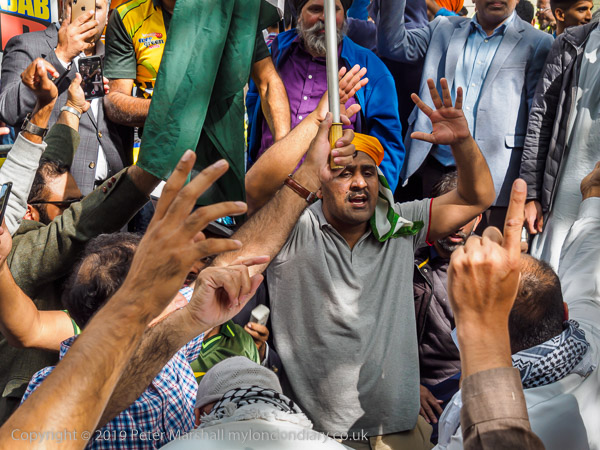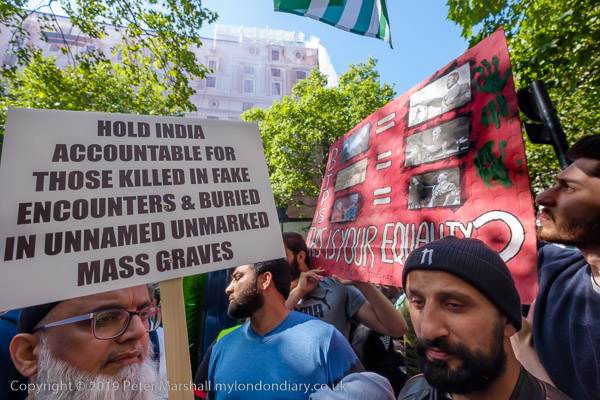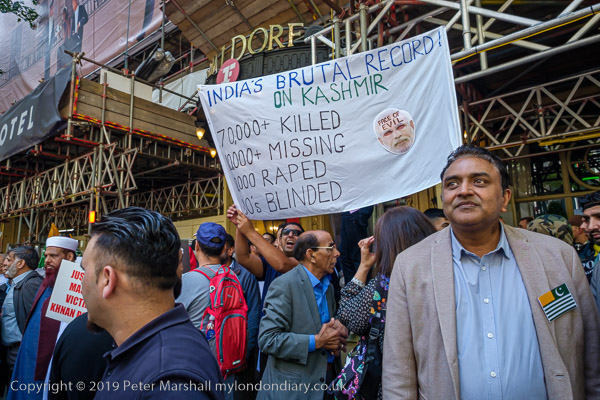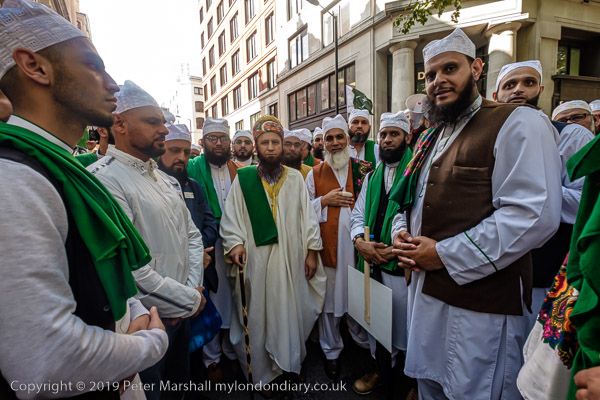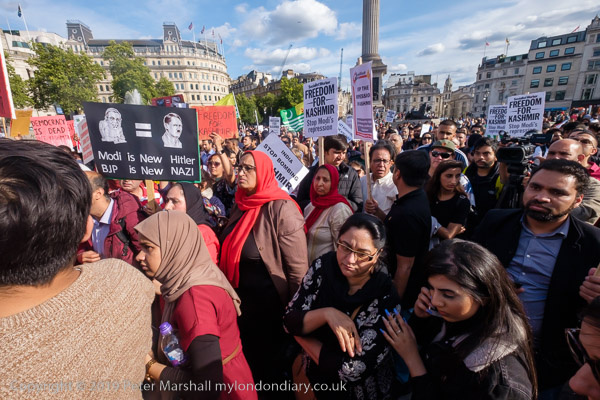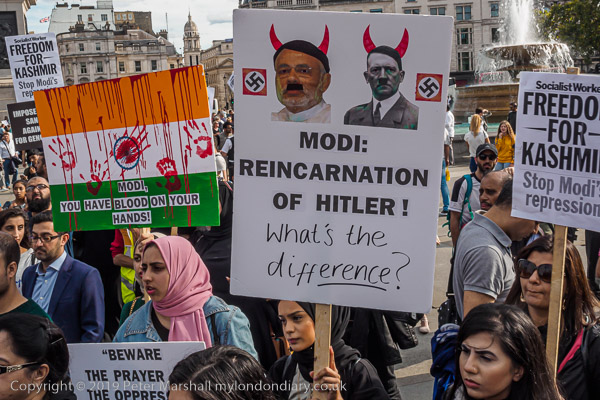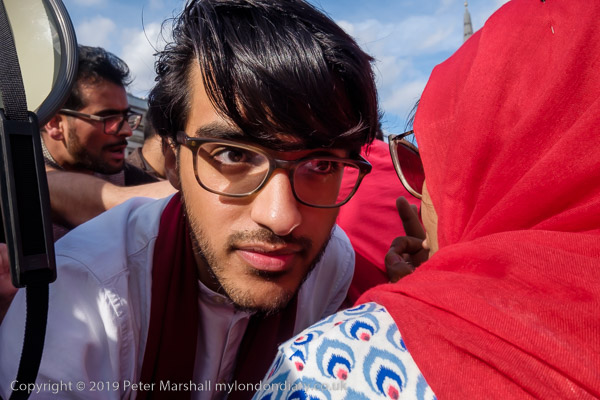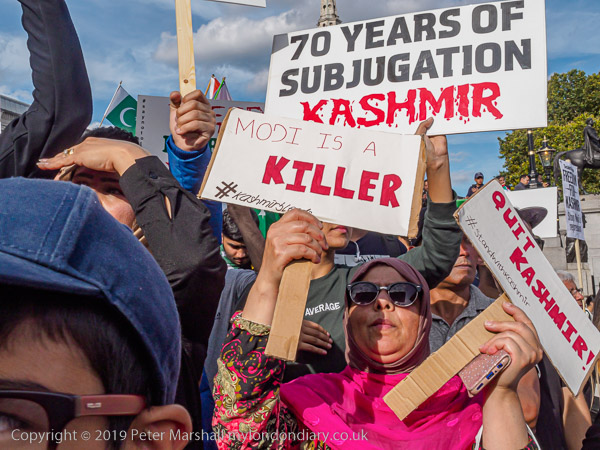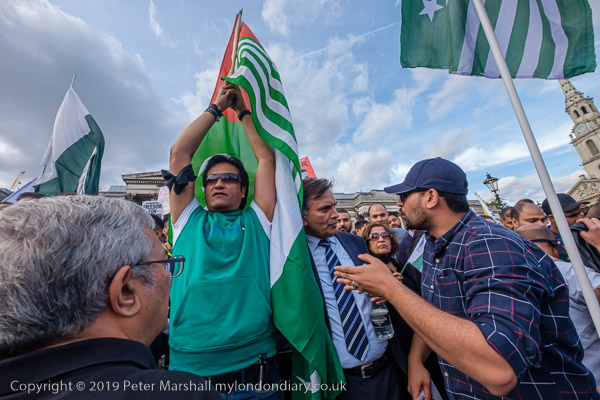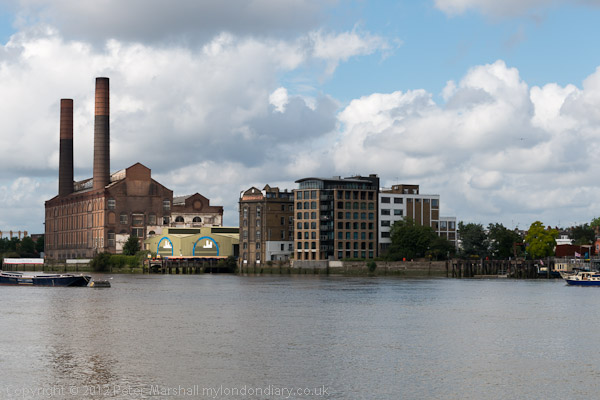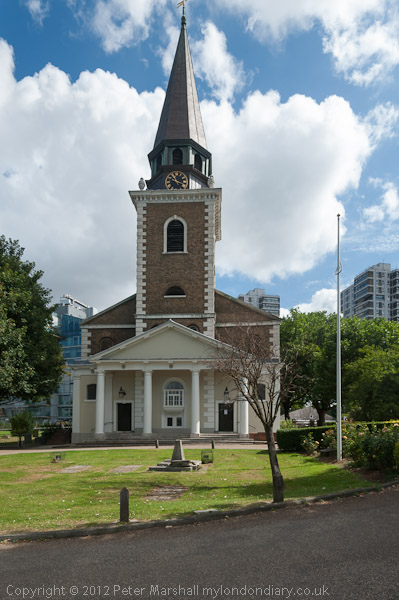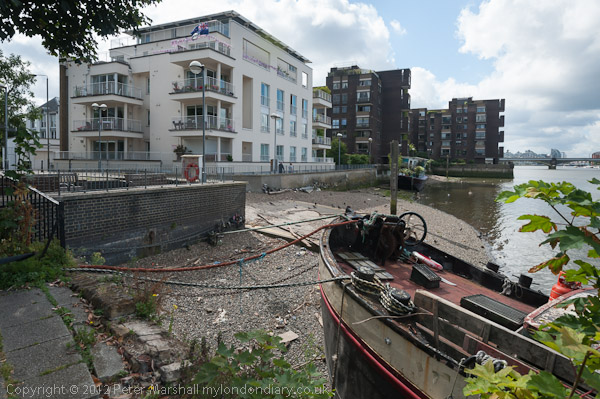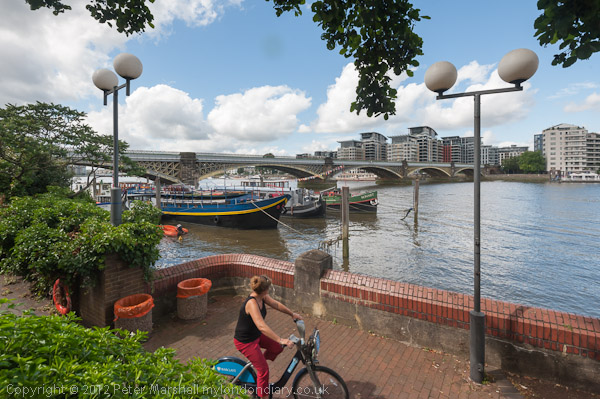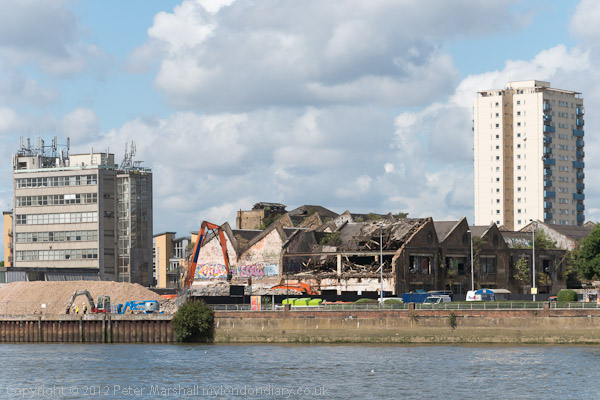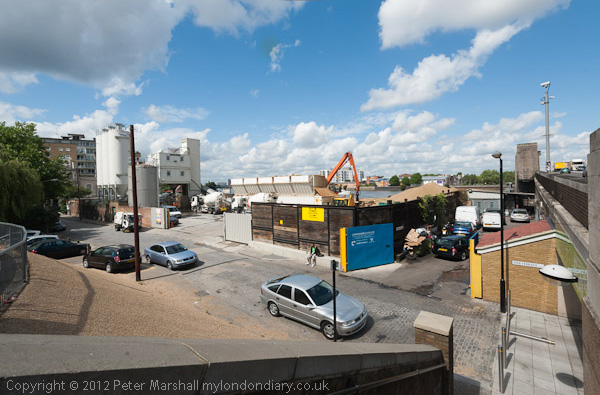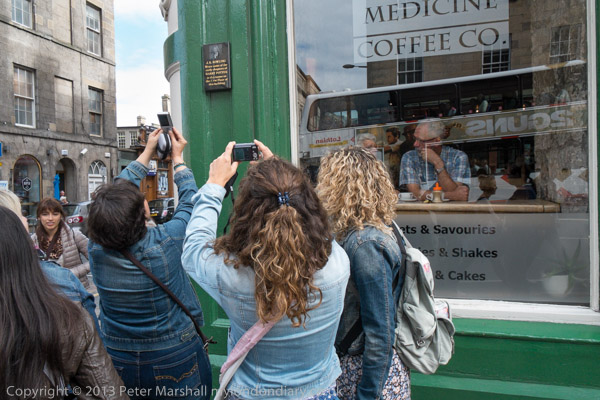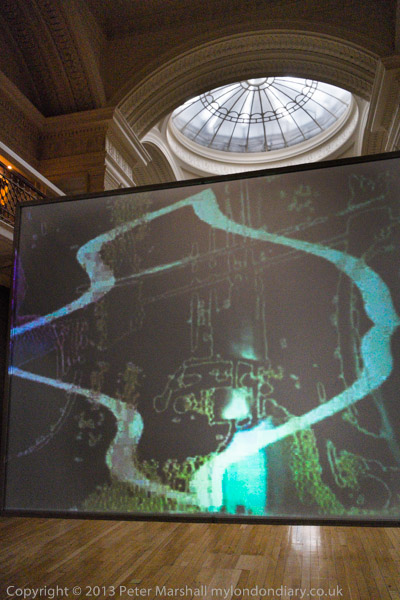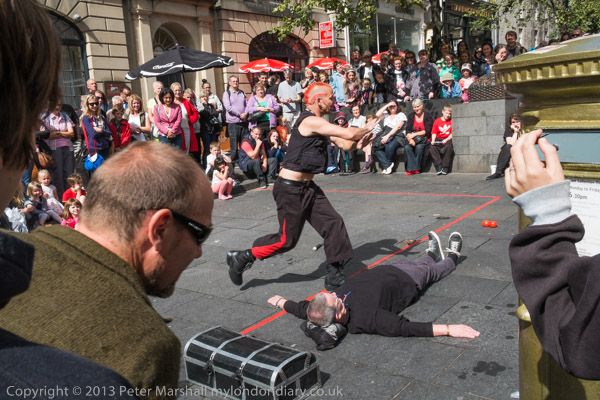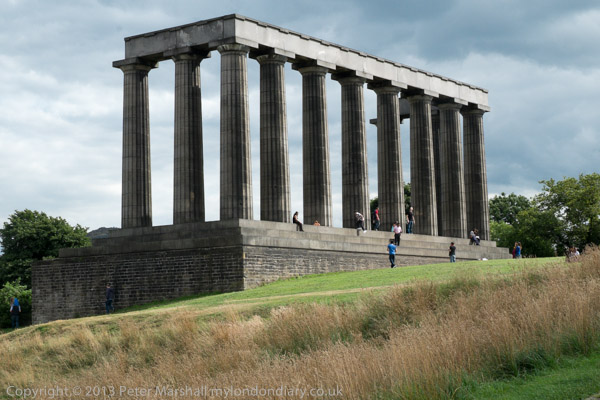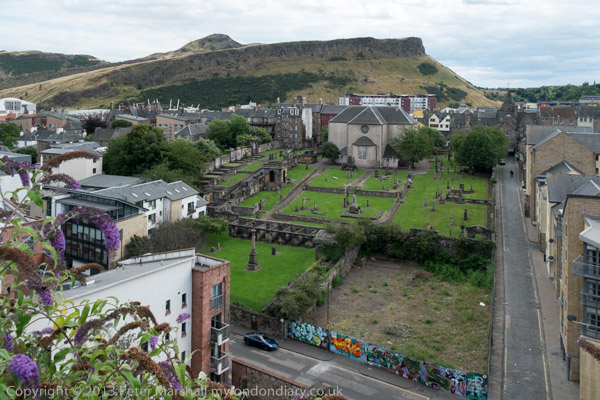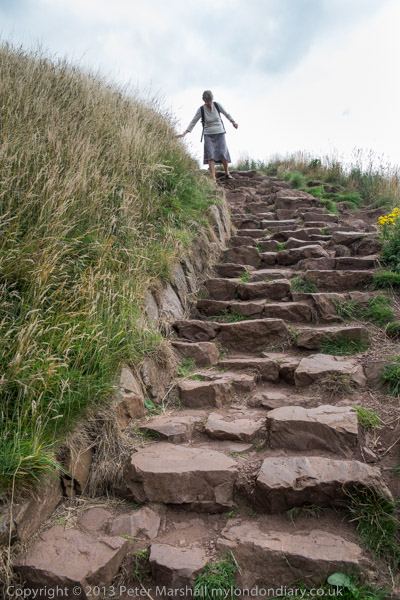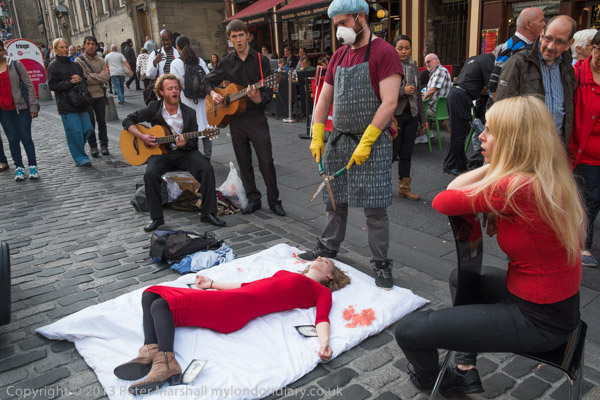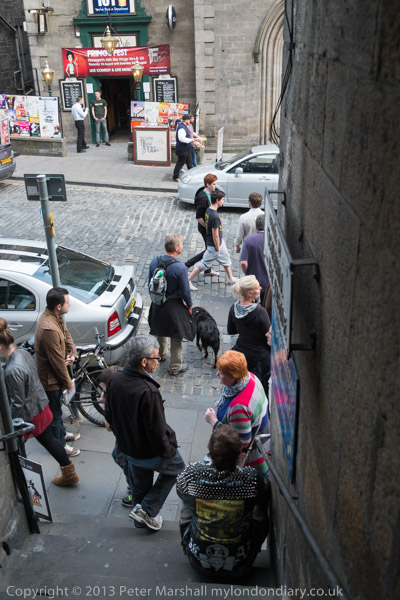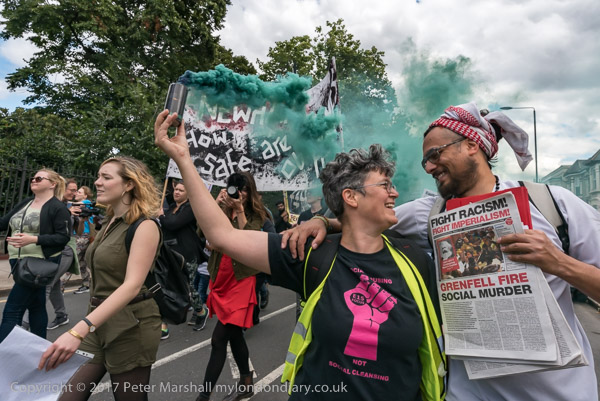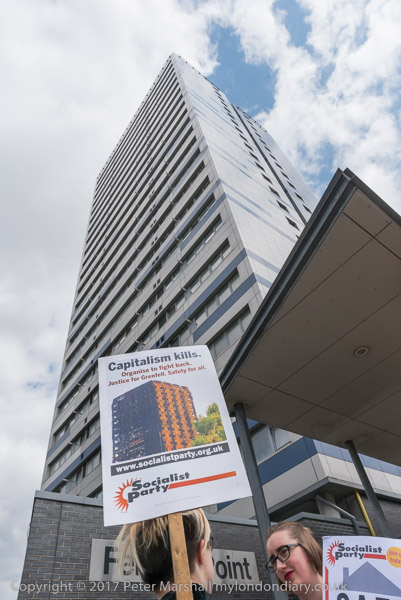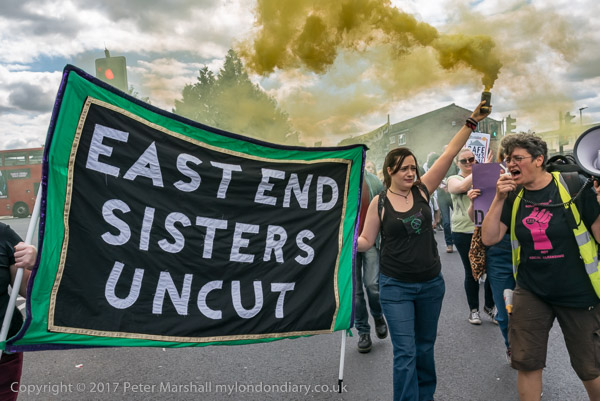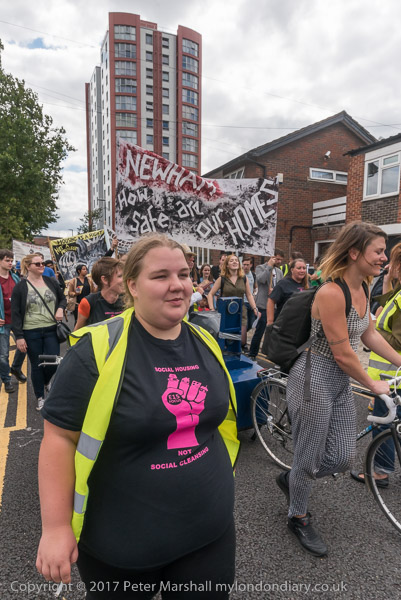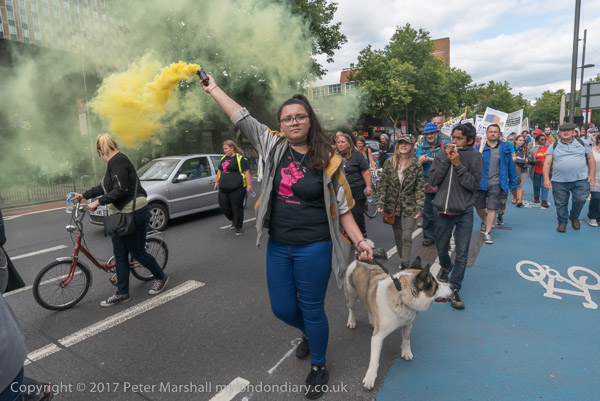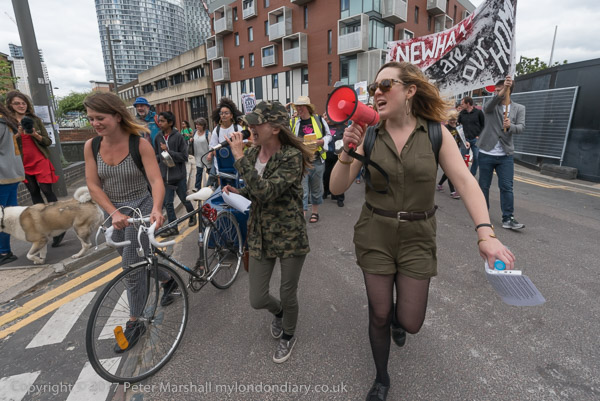Chelmsford & Marikana – On 18th August 2012 I travelled out of London to Chelmsford where an extreme right march was protesting against the building of a mosque, with a rather larger protest opposing them. I travelled back into London where a protest had been arranged at short notice against the shooting of striking miners by police in South Africa.
EDL Outnumbered in Chelmsford – Essex
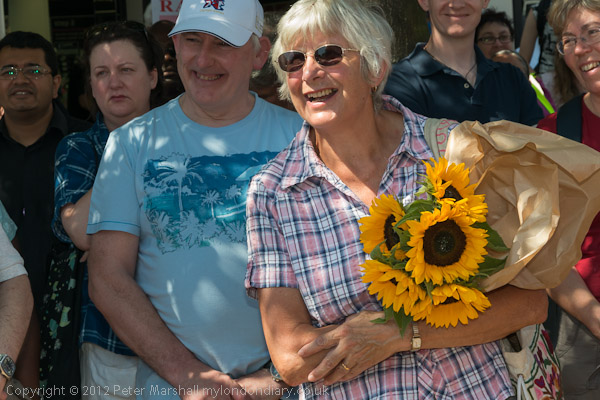
I think this was my first visit to Chelmsford, the county town of Essex although it is only around 30 miles northeast of London and the journey from Liverpool Street station takes just over half an hour. But I didn’t much enjoy my time there and though I’m sure its an interesting place I’ve not been back since.
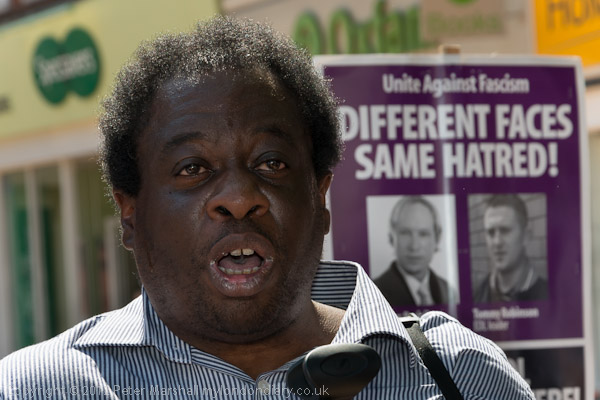
My day started fine as I walked from the station to the Unite Against Fascism rally in the middle of the city and mingled with the crowd there taking pictures. Everyone was friendly and I had no problems taking photographs.
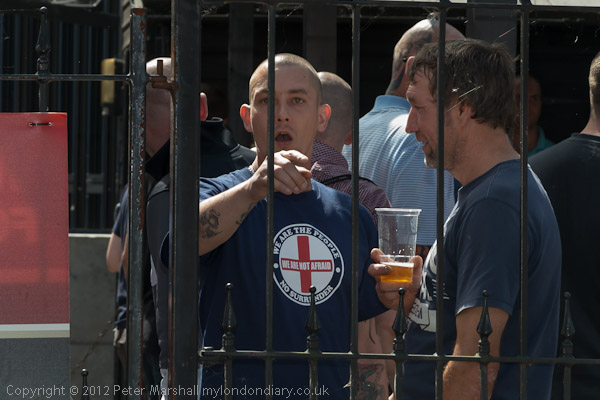
But then I went to the pub where the English Defence League (EDL) wer gathering for the start of their march, where I was met with abuse and threats and one man complained to the police about my taking pictures. Some others more happily posed for me, making V signs but I was pleased the pub railings were between them and me, and when the police, who had told the complainant that I was within my rights to take photographs, politely asked me if I would move away to to avoid further upsetting the EDL I was pleased to do so.
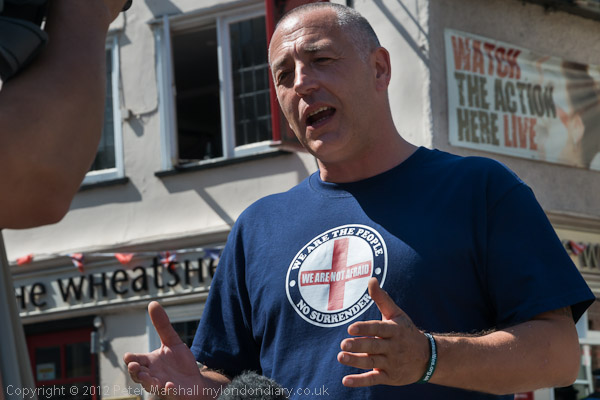
I crossed back to the opposite side of the road where over photographers and TV crews were standing, and photographed the EDL Essex Division spokesman Paul Pitt who was being interviewed, polite and smiling for the camera, denying that the EDL were racist and promising “there will be no violence from us.“
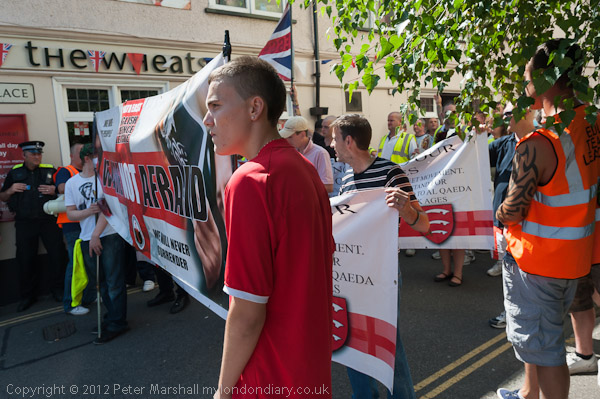
As the march formed up behind several banners I stayed in front of them with the other photographers, not getting as close as I usually like to do to avoid any further trouble. Despite Pitt’s claims the marchers were singing some of their usual Islamophobic EDL songs, and as the march moved off a rather large and fat marcher came towards me as I was taking pictures and said: “I hope all your family die of cancer.“
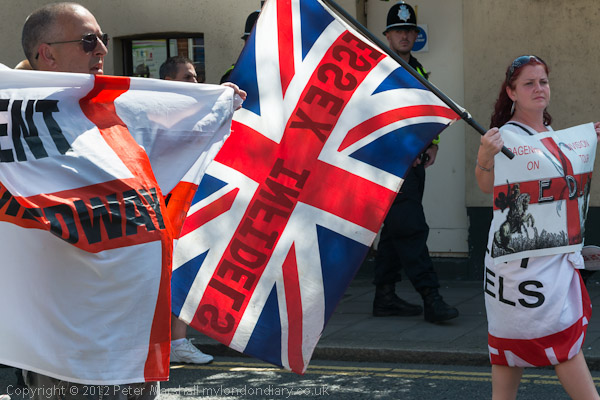
I left the EDL march as it turned into the street leading to where they were to hold their rally and returned to the UAF rally, passing a huge police presence with various fences and cordons across roads to ensure the two groups were kept apart.
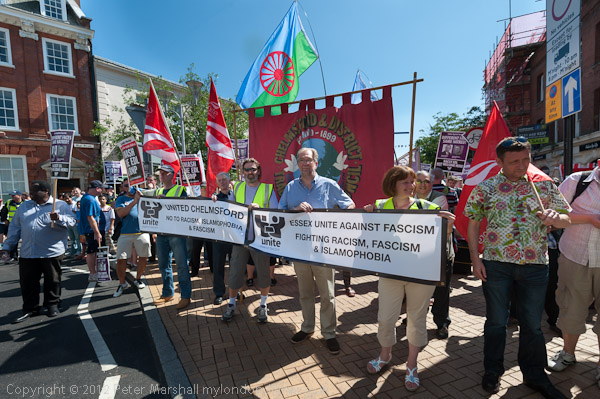
The UAF were in the middle of the busy shopping area and as soon as the police had sealed off the street where the EDL were holding their rally the UAF were allowed to march, going around the outside of that area.
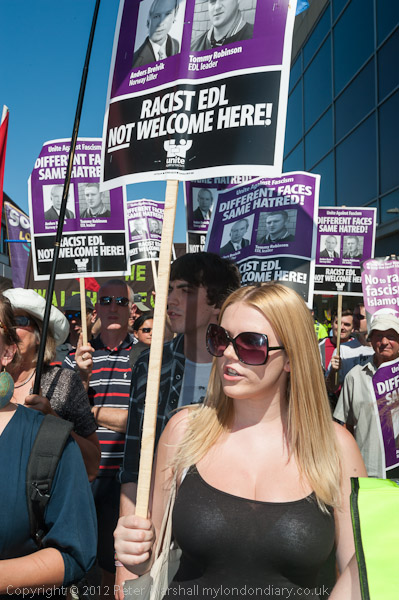
The atmosphere on the UAF march was very different. It was several times as large with many more placards and banners and much louder, with almost continuous chanting calling for an end to the racist provocations of the EDL, though usually rather less politely. And the people were certainly much more friendly.
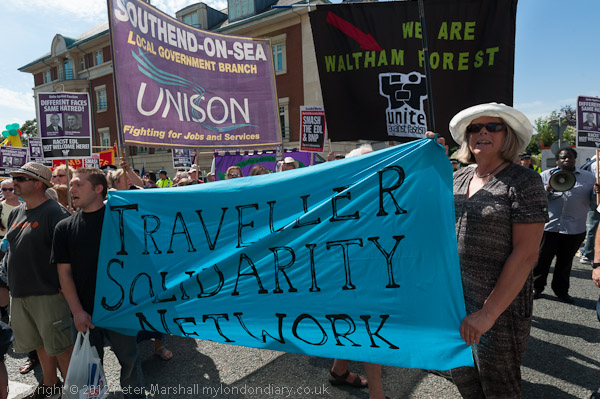
Two EDL supporters appeared at one point and began to loudly shout ‘EDL!, EDL!’ but police quickly moved them away and held them until the march had passed, warning them not to interfere with it again.
More about the march and many more pictures on My London Diary at EDL Outnumbered in Chelmsford.
Solidarity with Marikana Miners

I went back to the station and caught the train back to London and then got on the tube to Hyde Park Corner where, close to the station, a small group of protesters had gathered outside building where Lonmin, the owners of the Marikana mine, then had offices.
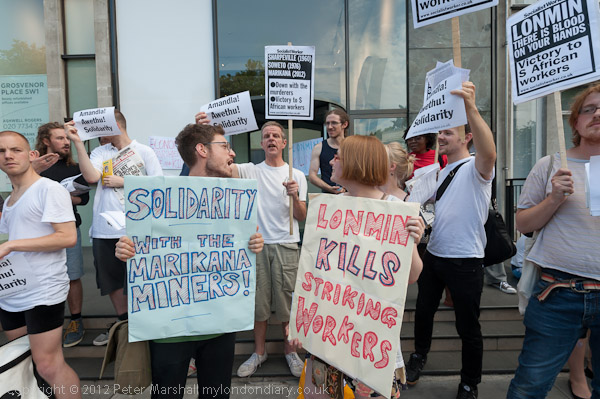
The killing of the 34 miners at Marikana in South Africa two days earlier had appalled many around the world and this emergency protest had been called as the news broke. But it was too short notice to draw a large crowd.
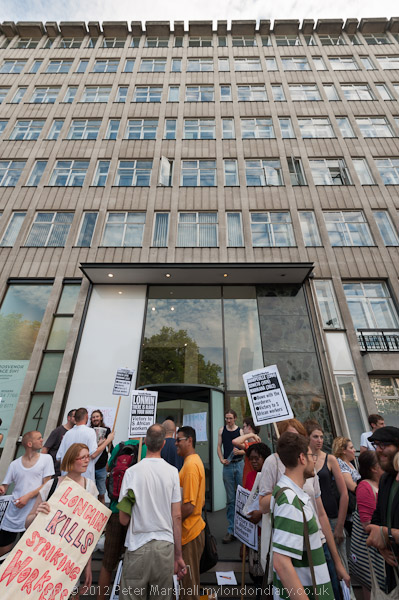
Lonmin, previously even more infamous as Lonrho, only occupied a small suite on the top floor of this recently refurbished office building. The building seemed empty and was firmly locked when the protesters arrived and there was nothing on the outside or visible through the glass doors of the lobby to indicate that this was the base of one of the world’s larger platinum mining companies, listed on the London Stock Exchange, with a revenue in 2014 of US$ 965 million.
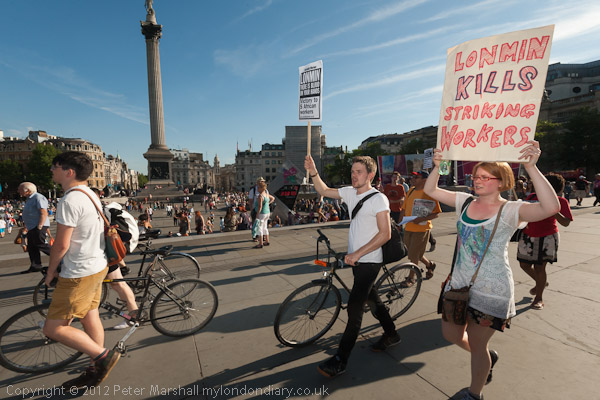
After protesting outside the offices for around an hour the group decided to walk to South Africa House in Trafalgar Square and hold a rally there.
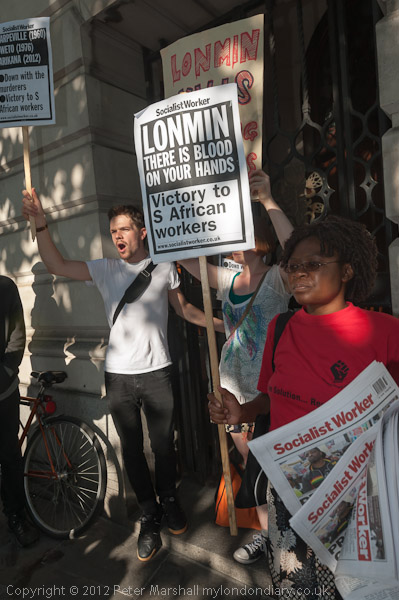
A speaker on the pavement in front of South African House told us how the massacre at Marikana fitted in to the pattern of exploitation and oppression that has characterised the mining industry in Africa. Conditions in many of the mines are terrible, with little or no attention to health and safety issues, and miners are on low wages.
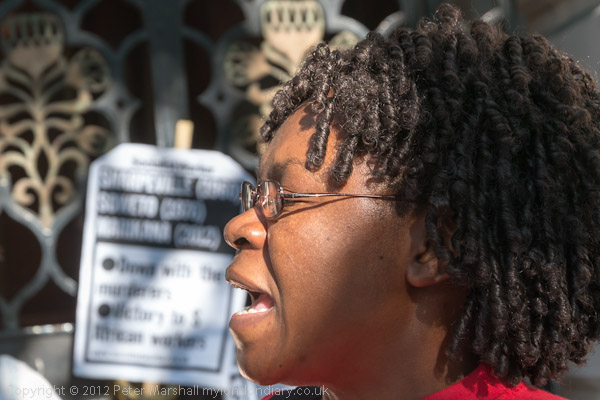
One of Lonmin’s board members at the time of the massacre was Cyril Ramaphosa, who a few months later became Deputy President of South Africa and in 2018 President. Many blamed his emails putting pressure on the police to intervene for the shooting.

The older South African National Union of Mineworkers, a member of the Congress of South African Trade Unions COSATU which has strong links to the governing African National Congress (ANC) is seen by many workers to have done little or nothing to improve pay and conditions in the mines. Many miners including those at Marikana had joined the breakaway Association of Mineworkers and Construction Union (AMCU) which represented over 70% of the Lonmin workers and had led the strike.
Solidarity with Marikana Miners







